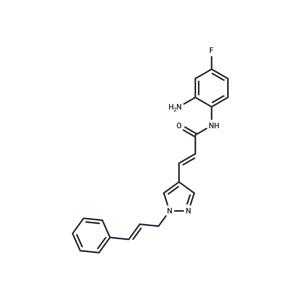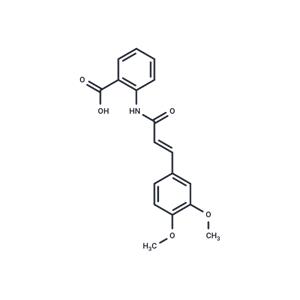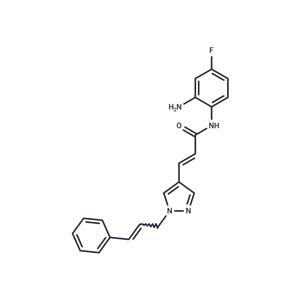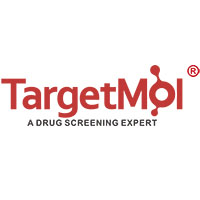Product Details
| Product Name:
RGFP966 |
CAS No.:
1357389-11-7 |
| Purity:
99.77% |
Supply Ability:
10g |
| Release date:
2024/11/19 |
Product Introduction
Bioactivity
| Name | RGFP966 |
| Description | RGFP966 is an HDAC3 inhibitor (IC50: 0.08 μM) and does not affect other HDACs at concentrations up to 15 μM. |
| Cell Research | To investigate the influence of the HDAC 3-selective inhibitor RGFP966 on cell viability, RAW 264.7 macrophages, HBE cells and hASM cells were seeded in 96-well plates. To obtain identical cell density at the start of the experiments, RAW 264.7 macrophages were seeded at 25,000 cells/cm2, HBE cells and hASM cells were seeded at 70% confluency (based on surface area) and were serum-starved for 24 h prior incubation with RGFP966. Shortly before incubation with RGFP966, the medium was replaced by 100 μl fresh (if appropriate serum free) culture medium. Incubations with LPS and IFNγ were performed as described for HDAC 1–3 downregulation by siRNA. After 20 h of incubation with RGFP966, 20 μl of CellTiter 96 AQueous One Solution reagent was added to each well and incubated at 37 °C for 1 h in the dark. The absorbance at 490 nm was measured using a Synergy H1 plate reader. LPS/IFNγ-stimulated cells without addition of RGFP966 were considered 100% [2]. |
| Kinase Assay | Briefly, the respective human recombinant HDAC enzymes were incubated in the absence and/or in presence of various concentrations RGFP966 and a pro-fluorogenic substrate at room temperature for 60 min. Next, the deacetylation reaction was stopped by the addition of the HDAC Stop Solution (6 mg/ml trypsin, 0.3 mM SAHA) in all wells and the plate was incubated at 37 °C for 20 min. The release of the fluorescent 7-amino-4-methylcoumarin was monitored by measuring the fluorescence at λem = 460 nm and λex = 390 nm using a Synergy H1 plate reader. The fluorescence value of the background wells was subtracted from the fluorescence of the positive control, blank and inhibitor wells. Nonlinear regression was used to fit the data to the log(inhibitor) vs. response curve using GraphPad Prism [2]. |
| Animal Research | Subthreshold training and a 24-h retention test for location-dependent object recognition memory (OLM) and novel object recognition memory (ORM) were performed as described previously. Mice received an injection of RGFP966 (3, 10, or 30 mg/kg s.c) or vehicle alone either 1 h before or immediately after a 3-min training seeion [1]. |
| In vitro | RGFP966 is specific for HDAC3 (IC50: 0.08 μM) and no effective inhibition of any other HDAC at concentrations up to 15 μM [1]. In LPS/IFNγ-stimulated RAW 264.7 macrophages treatment with RGFP966 did not change the expression of the genes TNFα, iNOS, and IL-10 but provided a significant downregulation of the expression of the pro-inflammatory genes IL-1β, IL-6 and IL-12b [2]. RGFP966 resulted in decreased cell growth in CTCL cell lines due to increased apoptosis that was associated with DNA damage and impaired S phase progression [3]. |
| In vivo | All mice exhibited a robust preference for the cocaine-paired context after cocaine-conditioned place preference (CPP) training. Treatment with RGFP966 (3 or 10 mg/kg, s.c.)immediately after the drug-free preference tests resulted in significant extinction of CPP on posttest 2 and posttest 3. Treatment with 10 mg/kg, but not with 3 mg/kg, resulted in a significantly rapid reduction of CPP on the subsequent days [1]. RGFP966 at doses of 10 and 25 mg/kg improves motor deficits on rotarod and in open field exploration, accompanied by neuroprotective effects on striatal volume [4]. |
| Storage | store at low temperature | Powder: -20°C for 3 years | In solvent: -80°C for 1 year | Shipping with blue ice. |
| Solubility Information | DMSO : 45 mg/mL (124.17 mM)
|
| Keywords | HDAC | inhibit | Histone deacetylases | Inhibitor | RGFP-966 | RGFP966 |
| Inhibitors Related | Valproic acid sodium salt | Panobinostat | Theophylline monohydrate | Sodium 4-phenylbutyrate | Vorinostat | Acefylline | Curcumin | Valproic Acid | Parthenolide | 4-Phenylbutyric acid | Theophylline | Methyl L-histidinate dihydrochloride |
| Related Compound Libraries | Highly Selective Inhibitor Library | NF-κB Signaling Compound Library | DNA Damage & Repair Compound Library | Reprogramming Compound Library | Bioactive Compound Library | Chromatin Modification Compound Library | Inhibitor Library | NO PAINS Compound Library | Anti-Aging Compound Library | Bioactive Compounds Library Max |
Company Profile Introduction
Target Molecule Corp. (TargetMol) is a global high-tech enterprise, headquartered in Boston, MA, specializing in chemical and biological research product and service to meet the research needs of global customers.
TargetMol has evolved into one of the biggest global compound library and small molecule suppliers and a customer based on 40+ countries. TargetMol offers over 80 types of compound libraries and a wide range of high-quality research chemicals including inhibitors, activator, natural compounds, peptides, inhibitory antibodies, and novel life-science kits, for laboratory and scientific use. Besides, virtual screening service is also available for customers who would like to conduct the computer-aided drug discovery.
You may like
-
CAS:70806-55-2
$32.00 / 5mg
-
CAS:86386-73-4
$36.00 / 50mg
-
CAS:1396841-57-8
$31.00 / 5mg
Recommended supplier
| Product name |
Price |
|
Suppliers |
Update time |
|
|
$/ |
|
Anhui Ruihan Technology Co., Ltd
|
2023-08-21 |








 United States
United States